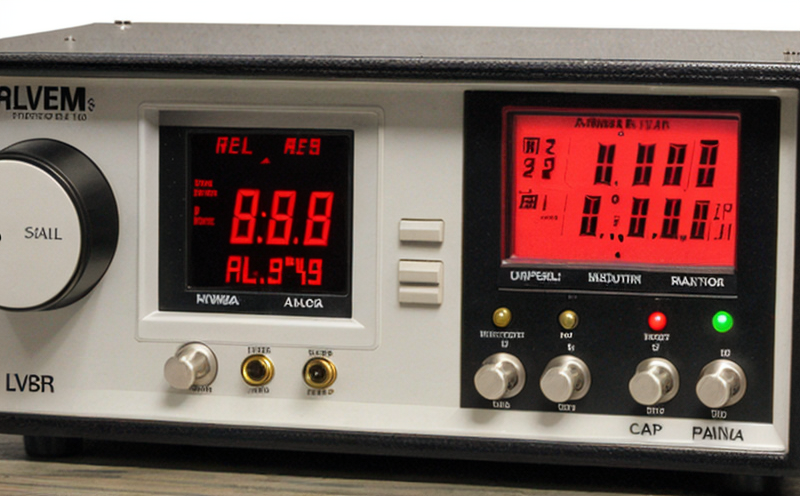ASTM E666 Calibration of Thermoluminescent Dosimeters (TLDs)
The ASTM E666 standard specifies a method for calibrating thermoluminescent dosimeters (TLDs) by exposing them to known radiation doses. This process ensures that TLDs are accurate and reliable, which is critical in various sectors including healthcare, nuclear energy, and research where personnel or equipment may be exposed to ionizing radiation.
The calibration of TLDs using ASTM E666 involves several key steps. Initially, the dosimeters are prepared by placing them into standardized containers with known radiation sources. The exposure time is carefully controlled to ensure uniform dose distribution across all units being calibrated. Post-exposure, the dosimeters undergo a readout process where their residual luminescence is measured.
The accuracy of TLD calibration directly impacts the reliability of radiation monitoring systems. Inaccurate dosimeter readings can lead to underestimation or overestimation of radiation exposure, which could have severe implications for safety and compliance with regulatory standards such as ICRP (International Commission on Radiological Protection) recommendations.
The ASTM E666 standard provides detailed protocols that ensure the precision and accuracy of TLD calibration. By adhering to these guidelines, laboratories can produce consistent and repeatable results, which is essential for maintaining compliance with national and international radiation protection standards like those set by the International Atomic Energy Agency (IAEA).
Calibrating TLDs according to ASTM E666 not only ensures that dosimeters meet regulatory requirements but also enhances confidence in their use during routine monitoring activities. This is particularly important in high-risk environments where accurate radiation measurements are crucial for worker safety and operational efficiency.
The method described in ASTM E666 is widely recognized for its robustness and reliability, making it a preferred choice by industries that require precise dosimetry solutions. By employing this standard, organizations can ensure they have the most up-to-date and accurate data on radiation exposure, thereby contributing to safer working conditions and more effective risk management.
In summary, ASTM E666 calibration of TLDs is a vital service for maintaining accuracy in ionizing radiation monitoring. It helps in achieving regulatory compliance while also enhancing safety protocols within various sectors that handle or are exposed to high levels of radiation.
Competitive Advantage and Market Impact
Adopting ASTM E666 for TLD calibration can significantly enhance a laboratory's reputation and market position. By providing accurate and reliable dosimetry services, laboratories can differentiate themselves from competitors in the radiation measurement industry.
Organizations that demonstrate compliance with international standards like ASTM E666 are viewed as leaders in their field, which can attract more clients seeking trustworthy partners for safety and regulatory assurance. This not only boosts business but also contributes to a safer work environment by ensuring that all TLDs used meet the highest quality benchmarks.
The service offered ensures that organizations stay ahead of regulatory changes and industry trends, thereby reducing risks associated with non-compliance. By maintaining high standards in calibration services, laboratories can build long-term relationships with clients who value precision and reliability in their dosimetry solutions.
Use Cases and Application Examples
The ASTM E666 calibration of TLDs finds application in a wide range of sectors where accurate radiation monitoring is essential. Healthcare facilities, nuclear power plants, research laboratories, and emergency response teams are among the primary beneficiaries.
In healthcare settings, particularly during medical procedures involving radiotherapy or fluoroscopy, precise dosimetry ensures that patients receive the correct dosage without exceeding safe limits. This not only enhances patient safety but also reduces the risk of radiation-induced side effects.
Nuclear power plants rely on accurate TLD calibration to monitor and control radiation levels within their facilities. This is critical for ensuring worker safety during routine maintenance or emergency situations involving radioactive materials.
Research laboratories often use TLDs in experiments that require controlled exposure to ionizing radiation. Calibrating these dosimeters according to ASTM E666 ensures that the research findings are based on accurate data, which is crucial for advancing scientific knowledge and developing new technologies.
In emergency response scenarios, such as nuclear accidents or natural disasters involving radioactive materials, reliable TLDs calibrated by ASTM E666 can provide critical information about radiation levels. This aids in making informed decisions regarding evacuation, contamination control, and recovery efforts.
Why Choose This Test
- Precision and Accuracy: ASTM E666 ensures the highest level of precision in TLD calibration, leading to reliable dose measurements.
- Regulatory Compliance: Adhering to this standard helps organizations meet stringent regulatory requirements for radiation safety.
- Enhanced Safety: Accurate dosimetry is crucial for protecting personnel and equipment from harmful radiation exposure.
- Quality Assurance: Regular calibration ensures consistent performance of TLDs, which is vital for maintaining quality standards.
- Risk Management: Reliable data on radiation exposure enables better risk assessment and mitigation strategies.





